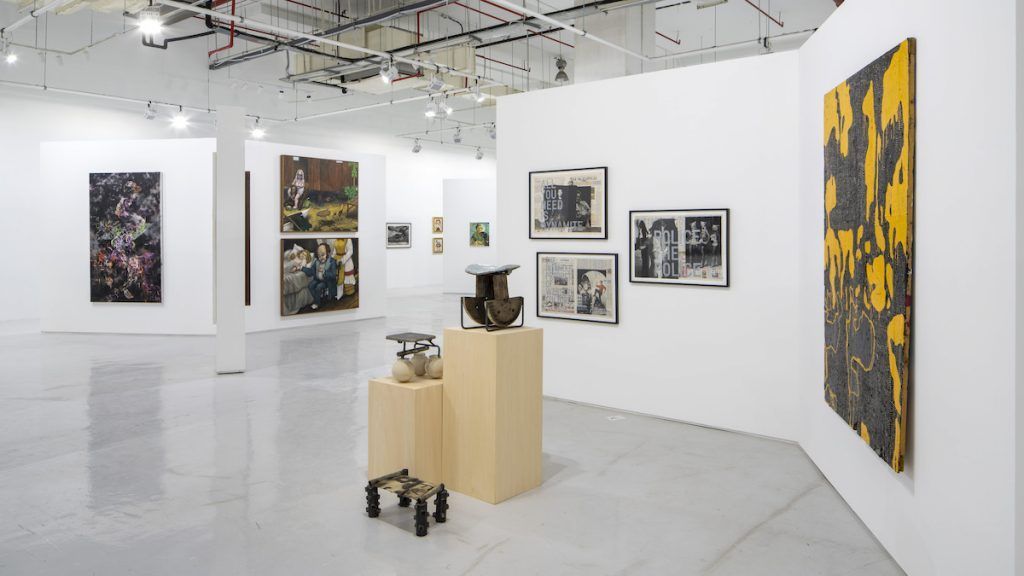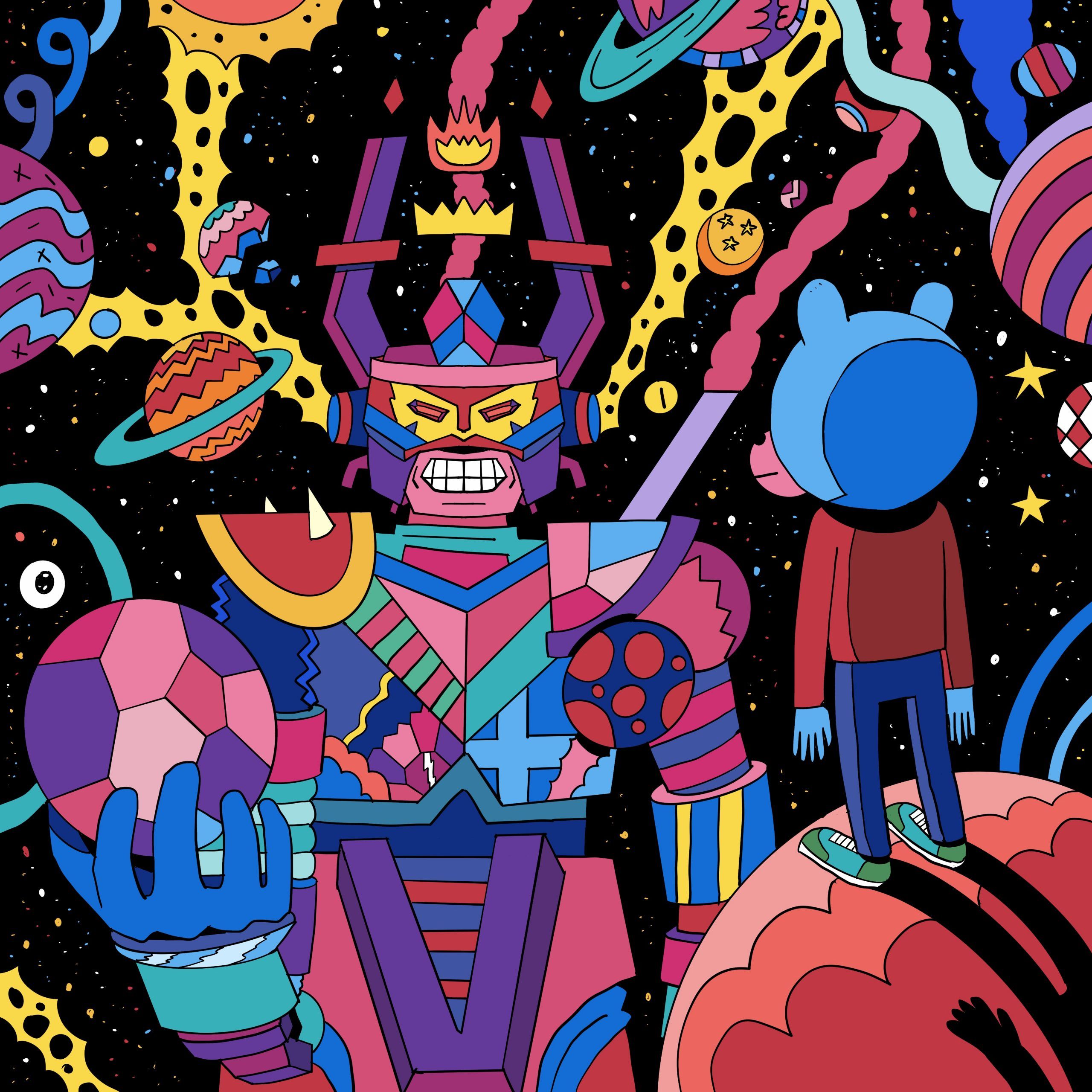Now, 2021 was undisputedly, the year of NFTs. Notwithstanding the rampant controversies – climate irresponsibility, scams and thefts – the market for non-fungible tokens hit US$41 billion in December, with a gamut of industries from fashion to entertainment selling and utilising the technology for a smorgasbord of digital products (virtual accessories) and purposes (club membership).
But nowhere are NFTs as pervasive as in the art world. Ever since Beeple’s Everydays: The First 5,000 Days sold for a whopping US$69 million at Christie’s in March last year, cryptoart has exploded online and permeated our consciousness like never before. In 2021, digital artists including Pak, Tyler Hobbs and Xcopy shot to fame with headline- grabbing NFT sales that rival the global fine art market.
Museums, galleries and art fairs also got in on the trend: The British Museum partnered with French startup LaCollection to create NFT versions of some of its artworks; Art Basel Miami held an exhibition that allowed visitors to mint their own NFTs; while international mega-gallery Pace launched a dedicated NFT platform called Pace Verso in July 2021 to show and sell the works of blockchain artists.
Closer to home, Singapore saw its first large-scale, physical NFT exhibition, Right Click + Save, in November 2021. Diving into the history of cryptoart, the show was presented by Coinhako, a digital assets wallet service provider, and Appetite, a multi-concept space and research centre. Works from artists including Beeple, Andy Warhol and others in the digital and cryptoart world were displayed on screens, monitors, projections and as framed prints.
This year’s Singapore Art Week also had its dose of NFTs by way of S.E.A. Focus, an anchor event by STPI that spotlights contemporary art in Southeast Asia. Beyond showcasing traditional art forms, the 2022 programming includes an Asia-centric NFT exhibition titled Tezos NFTs: The New North Star.
A collaboration between S.E.A. Focus, TZ APAC (leading adoption entity for the energy-efficient Tezos blockchain in Asia) and CAWA (Crypto Art Week Asia), it features some 15 digital artists, who have minted their art on the Tezos blockchain, including Indonesian comic artist Arya Mularama, Brunei-based generative artist Yazid and Singapore-based abstract artist warrragwag. Visitors could also experience first-hand the process of minting an NFT at the exhibition.
Asia is a hotbed for non-fungible tokens, says Emi Eu, project director of S.E.A. Focus and executive director of STPI, in spite of manifold fraudulent projects where artists’ works are procured and minted without permission. “Recently, the region has emerged as a leader in the NFTs phenomenon, with Central and Southeast Asia accounting for 35 per cent of the global trade last year according to Asia Financial,” she adds.
“As a platform and champion for Southeast Asian contemporary art, we always aim to introduce new discoveries in all mediums and we cannot ignore the rise of NFTs. We are eager to see what lies ahead in a world where change is the only constant.”
George Galanakis, award-winning cryptoartist and founder of CAWA sees Tezos NFTs: The New North Star as an opportunity to spotlight the creative talents across Asia and in the blockchain space. “These artists have gained prominence in a notoriously competitive space – a testament not only to their individual abilities, but also the growing recognition of the talent in this region,” he explains.
With established art institutions like Singapore Art Week and Art Basel validating the novel digital asset class, NFTs are primed to further rise in interest in this part of the world. David Tng, the head of growth at TZ APAC, is among the many insiders with this view.
“That our team could host a showcase at some of the most prestigious art events in the world is a testament to the growing legitimacy of NFT art.
Beyond that, the market demand is undeniable – according to an Art Basel and UBS survey, millennial collectors are driving demand for digital artworks, are most likely to spend north of US$1 million on art, and also own the largest collections of all generations. Market trends also look promising for NFT creators: The younger the generation of collectors, such as Gen Z, the greater their collection of digital art.”
Eu echoes this sentiment: “I’d like to think that technology assists and augments creativity rather than replacing it, especially in Asia where we are early adopters of new technologies. It is interesting to see how NFTs appeal to a wider audience that may not necessarily resonate with traditional art formats.”
If you’re in two minds about the NFT landscape, Tng advises to first research, then buy art for art’s sake. “Art is subjective. Like a collector in the traditional art world, I’d say go with what you like. That means buying a piece that simply catches your eye or resonates deeply with you. Or you may also consider the popularity of the artist; whether they have a strong community; how frequently they drop new works; as well as the activity of their works on both primary and secondary markets.
“Get on Twitter or Instagram, and follow the artist, as most artists minting their artworks as NFTs actively engage and connect with their community. Remember, when you buy an NFT artwork, it’s a powerful way to demonstrate support for them. It’s a small but meaningful way to show that you value what they’re putting into the world.”
Header image: Galan’s Hunger by Arya Mularama is minted on the Tezos blockchain
This story first appeared on Prestige Singapore.
Yes, I agree to the Privacy Policy
Subscribe to our newsletter to get the latest updates.
Thank you for your subscription.


